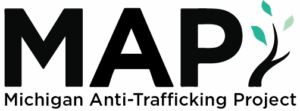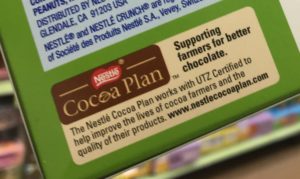Becoming a Part of the Solution: First Steps to Ethical Shopping
10 steps to help you start thinking and shopping ethically…
The world of ethical shopping can feel SO overwhelming when you first start out! We are writing this blog with you in mind and hoping to give you some practical “baby steps” you can take to get started on this journey.
If you are reading this, we assume that you have become aware of the complexities found within the supply chains of the products we buy, most important to our cause, slavery. Slavery can take on many forms such as child labor, forced labor, or debt bondage.
The supply chains from first tier basic materials to end tier final product can be incredibly complex and hard to trace, especially given our global economy. Because they can be so far-reaching there is ample space for exploiters to take advantage and make a profit off of those who are most vulnerable.
THIS is why we care about ethical shopping. THIS is why we hope to one day see a world where every supply chain can be traced, where relationships between farmers, factory owners and the “brand” are real and trusted.
Supply always follows demand. If the demand for ethical products and traceable supply chains goes up, so will supply. Simply by choosing to purchase differently you are making an impact in this world and helping to abolish slavery. We think that is SO COOL, and one of the easiest ways to be a part of the anti-trafficking movement.
You might be thinking, “EASY? Are you kidding me? Everywhere I look I see slavery now! I’m afraid to buy anything and feel paralyzed. I’m so overwhelmed and don’t know what to do.”
First of all, you are not alone, this is completely normal. And honestly, we are glad that you feel this way. It shows that you understand the significance of what is going on and that you want to be a part of the solution and not continue to feed the problem.
Annnnnd…we’re here to help! We want to give you some easy steps that you can take to start navigating this new world.
Step One: Watch “The True Cost” documentary and/or visit slaveryfootprint.org to learn more
Step Two: Start asking yourself “Who made this?” Could be your clothes, furniture, food…start getting into a practice of asking yourself this. It will help when you enter stores, if the first question you think is “who made this?” It will significantly impact what you buy, and also help you to eradicate slavery from the products you purchase.
Step Three: Get to know the different certifications: Fair Trade, Rainforest Alliance, GOTS, etc.
Step Four: Browse the websites of products you love and see if you can find if they are transparent about their supply chain and what their policies are for employees, specifically in countries where the goods are manufactured or harvested. If a company cares about transparency, they want you to know and will make it clear on their website! It probably has cost the company in time and money to choose to source, supply and employ ethically, so they will make it known if they are doing it!
When you go to the website scroll to the bottom of the website and click on the “About Us” section they will say something there. Or, they might even have a whole page dedicated to their ethical standards, transparency, ways they treat their employees and what they are doing to ensure that slavery is not in their supply chains.
Step Five: Start following social media accounts that will increase your awareness and empower you in your growth. Even just having an account as a part of your normal scrolling will remind you whenever you are on social media about ethical shopping.
Step Six: Browse some of these shopping guides to familiarize yourself with ethical brands
https://www.thehonestconsumer.com/blog/slow-fashion-brands
https://www.dressember.org/directory
https://www.consciouslifeandstyle.com/affordable-ethical-fashion-brands/
https://mercyhouseglobal.org/ethical-shopping-guide/
Step Seven: Go buy something! Just try it out. If you want the easy way, buy something online. If you’re up for a challenge already, go to your local grocery store and find something fair trade!
Step Eight: Evaluate. What was it like for you to buy this way? What are barriers for you to continue purchasing this way?
Step Nine: Go slow. Ethical shopping purposefully goes against FAST fashion and FAST buying. You do not need to go out and replace everything you own with something that is ethically made. Choose to add purposely. When you need something new, make the choice to find it ethically. This WILL require extra time on your part, especially in the beginning as you get to know brands and certification labels, but the extra time is worth it! Remember, each ethical purchase you make, increases the demand for products made in this way. This is one way you are helping to reduce labor abuses and make a difference in the world.
Step Ten: Send emails to companies that are not transparent about their supply chain and who do not make a point to highlight their care of employees in all levels of business. Ask them about where their factories are located and what wages they give to employees. Do employees get time off? Are they compensated for overtime? What is the companies stance on ethical business practices?
There you go! 10 steps to help you start thinking and shopping ethically. We hope this is helpful. Please comment and let us know what you learn as you go through the steps, and if there’s anything you think we should add!




